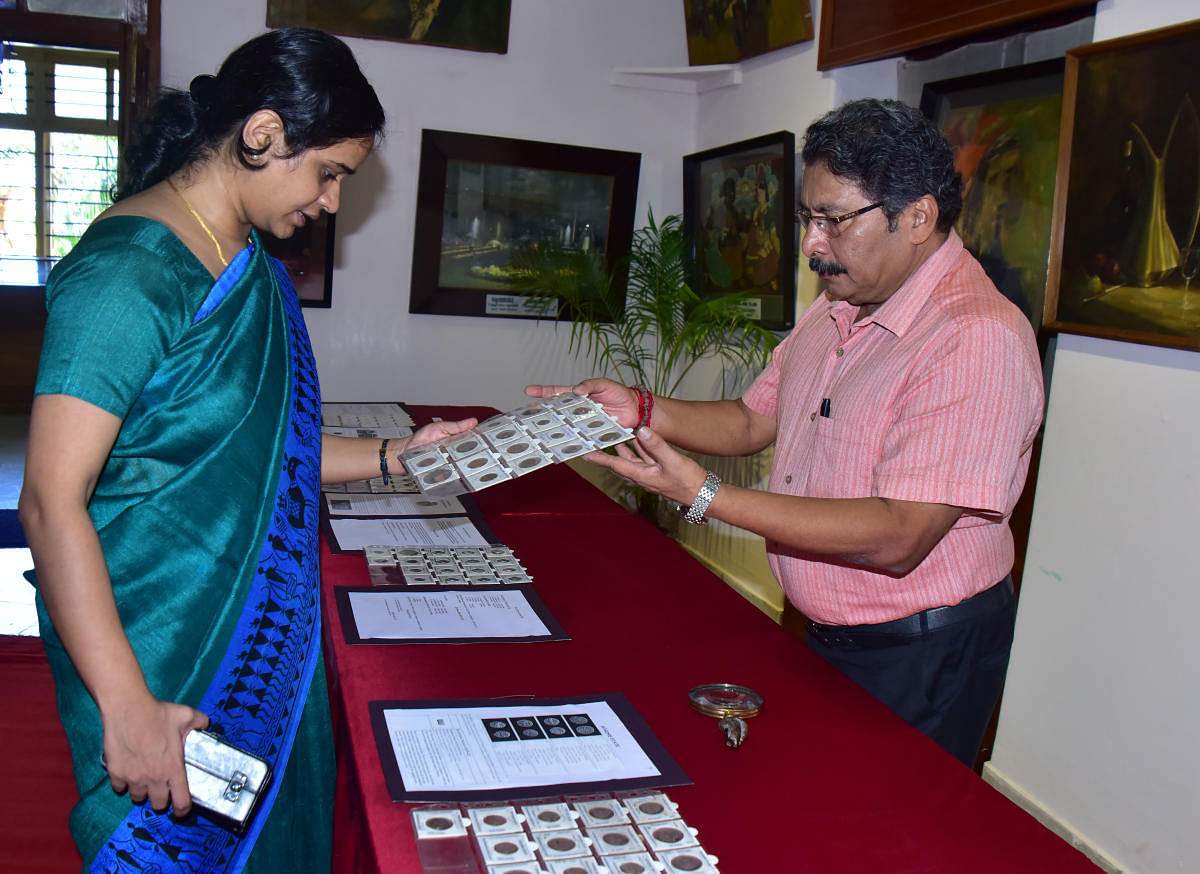
Coins belonging to various princely states, East India Company, British Empire, punch marked coins and also ‘Mashak’ gave an insight into the history and culture of civilisation.
The exhibition of coins was organised as a part of World Heritage Week at Srimanthi Bai Memorial Government Museum in Bejai.
In addition to the coins, the literature associated with various emperors and dynasties periods were also on display.
The coins stand as a mirror of the past revealing vital information. Some coins surprised visitors with their small size as well, said numismatists, who had displayed their coin collections.
Explaining the East India and British India coins, Nagaraj Shet, a jeweller in Mangaluru, said, “Coins from 1835 to 1939 were made of silver. From 1942, 50% silver was used.”
One rupee coins of Victoria Empress, King Edward VII, King George V and George VI were also displayed by him. Each silver coin was weighing 11.6 gram (1 tola) and the coins had the image of the rulers. In addition, there were 1/4 coin, half rupee, 2 anna coins of 1875, 1878; 1 quarter anna of copper coin along with freak 10 paise on display.
He said he had been collecting coins for the past 25 years. “Once you start collecting coins, it builds up interest and helps in gaining knowledge,” Shet added.
Literature
Vidya Kishore Baglodi had come up with literature aspects of coins belonging to various dynasties and emperors, like Kadamba, Hoysala, Vijayanagara, Chola, Adilshashis, Rome, Mughals, Shatavahanas and Guptas, to give an overall history of coins.
In addition, coins belonging to the enigmatic Kannada numeral series of Mysore Wodeyar were also on display.
Explaining the Kannada numeral series, Vidya said initially it was thought that Chikkadevaraya Wodeyar, who ruled from 1673 to 1704, issued these coins known for numbers 1 to 31. These coins are found almost exclusively in Mysore state. However, when other coins up to 41 numbers were found, there were doubts about who issued it. Kannada numerals are written within dotted border in these coins.
Prabhakar Kamath Markad had come up with coins of Travancore (kingdom) and Chera (dynasty) made of brass and copper, Bombay Presidency, Madras Presidency and Bengal Presidency and ‘Tara’ of Vijayanagara Empire. In addition, there were 1/12 Anna, 1/2 pice, 1/4 anna, 1/2 anna, 1 anna, 2 anna, 4 anna, 8 anna and Re 1 coins on display. Bronze One Pice coin of King George VI of Lahore Mint was also on display.
While Krishna Prasad Rai had exhibited Ancient Indian Coins ranging from 350 BC to British India. There were punch mark coins, silver and copper coins, coins belonging to princely states who ruled India.
“India had around 570 princely states. Of which, 240 princely states had issued coins. I have collection of coins belonging to 70 to 80 princely states. I want to have at least one coin of all the princely states,” Rai added.
Travancore silver coins of Rama Varma IV, Rama Varma V, and Rama Varma VI, coins of Mysore Wodeyars, Baroda State, Delhi Sulthante, British India silver coins of rupee, half rupee, quarter rupee and 1/8th rupee coins were exhibited.